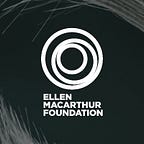Food design: the secret ingredient of a circular economy
You may be a food designer, but you might not know it
By Gaëlle Le Gélard, Circular Design Manager, Ellen MacArthur Foundation
What is food design?
Like every product, food is designed.
Like most French people of my generation, I grew up eating Petit Ecolier biscuits. They are delicious biscuits draped with a layer of chocolate imprinted with the image of a schoolboy wearing a beret and carrying a basket. You start by eating the corner, then the sides and finish with the chocolate layer. Un délice.
It wasn’t until recently that I realised that those biscuits had been designed. They are the result of a number of intentional decisions taken at the development phase. A brand manager had created the concept, a food scientist had come up with the recipe, a buyer had sourced the ingredients from specific suppliers, and a retailer had chosen the shelf where my parents decided to buy them.
This is what we call food design: The series of decisions made between the moment where a raw ingredient is harvested until it ends up on our shelf or plate. Food design happens in restaurants when chefs create new menus; it happens with food brands when teams launch new products, and it happens in cities when nutritionists create guidelines for school canteen menus.
What we need to ask ourselves is: is there a clear and positive intention behind those decisions? Do they enable a regenerative food system?
Why is it important?
The influence of the decisions taken at the design stage radiates throughout the whole food system, from farmers to consumers. If we want to achieve a circular economy for food, design is a key element.
Food design defines what ingredients you end up eating and how diverse they are. Currently, despite there being hundreds of thousands of edible plants and animals, only 12 crops and five animal species account for 75% of our food intake, according to the United Nations Food and Agricultural Organisation. Food designers could decide to use a whole range of new ingredients, helping us discover forgotten flavours, whilst increasing biodiversity.
Food design defines what is wasted or not. For example, the popular Swedish Rscued fruit juices are made from discarded fruits and vegetables, intentionally avoiding waste.
Eventually, food design greatly influences what farmers grow, and how they grow it, by creating sufficient demand. Biscuit maker LU has set up a protocol called the Harmony Programme to work with some of its suppliers. If the farmers agree to grow a certain type of wheat that meets certain criteria — for example, if 3% of the wheat field is dedicated to wildflowers for pollinators, or if the use of pesticides and fertilisers is reduced — LU will buy their wheat at a premium price. The choice of the brand to have local, high-quality wheat in their biscuits has encouraged farmers to switch to more regenerative practices.
As in many other disciplines of design, the scope of food designers — although not many would yet define themselves as such — is widening. What was important 20 years ago was to make tasty products that people would love. In recent years, there has been a strong focus on products that are nutritious as well as tasty. What we see emerging now is a demand for nutritious, tasty products that leave nature in a better state than it was before they were produced.
Who are the food designers?
If food is designed, then we can safely assume that there are food designers. I have to admit that even after scouring the web, I have found only a handful of people who call themselves food designers. One notable exception is Kellogg’s, since the brand openly started recruiting ‘food designers’ in 2020.
However, designers can be considered as all the actors that have influence over the decisions taken at the design stage of any given system.
For the food system, that means:
- The nutritionists and chefs who define the menus and the recipes in restaurants and canteens
- The brand managers and product developers in fast-moving consumer goods (FMCG) companies who create the concept of a new product
- Food scientists who define the ingredients
- Buyers who source each ingredient
Two roles have an indirect but nonetheless important influence and should not be overlooked:
- The leaders who define the commitments that the company will need to fulfil and can unlock resources
- The sustainability leaders who translate company commitments into activities for each business unit
If you belong to one of those categories, you’re closer to food design than perhaps you first thought. What’s more, you have great power to leverage in the transition to a circular economy for food.
Where to start: re-designing food in three steps
- A good place to start is to learn more about solutions to create a more regenerative food system. Here are some resources available to you: EAT Lancet: Diets for a Better Future; Knorr and WWF 50 Future Foods; The Ellen MacArthur Foundation’s Cities and Circular Economy for Food report.
- Change your mindset: Try to design products and menus around what nature needs. For example, legumes are extremely beneficial crops because they fixate nitrogen in the soil, which other plants need to thrive. Why not integrate more green peas or lentils in your recipes?
- There is no such thing as waste in nature, but unfortunately, a lot of waste is created throughout the food system. Perfectly good fruits and vegetables are set aside because they don’t fit specifications, and peels and seeds are thrown away because they have no place in the recipes.
Using ingredients that otherwise would have been wasted is called upcycling. Learn more about how you can use upcycled ingredients in your kitchen or lab thanks to the Upcycled Food Association.
